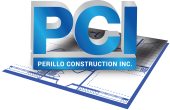Upgrading your commercial space can deliver major long-term value, but the process itself often comes with hesitation—especially when your business can’t afford to shut down for weeks or months. Fortunately, it is possible to renovate while remaining fully or partially operational. The key is phasing.
Phasing a renovation allows business owners to strategically divide the project into manageable sections, minimizing disruptions while improvements are underway. Whether you’re a building owner updating tenant spaces or a facility manager planning major renovations in a corporate office, phasing allows you to enhance your property without pausing productivity. When done right, it offers a smart balance of progress and practicality.
Why Phasing Makes Sense
At its core, phasing is all about flexibility. By breaking a large renovation into multiple stages, construction can proceed in one area while the rest of the building remains functional. This reduces the need for full shutdowns or costly relocations, making it ideal for offices, healthcare facilities, retail stores, and multi-tenant buildings.
It’s not just about convenience—it’s about preserving continuity. Staying open throughout a renovation project supports your staff, maintains your client relationships, and sustains your revenue stream. Plus, phased projects can be easier to fund incrementally and adjust along the way based on budget or evolving business needs.
Start With a Solid Plan
A successful phased renovation always starts with thoughtful planning. Before work begins, collaborate with your contractor and design team to map out the entire process in detail. Key factors to address include:
- Which areas of the building are most essential for daily operations
- How to sequence construction for the least amount of disruption
- Temporary space reassignments or off-site options if needed
- How existing mechanical systems (like HVAC and electricity) will be affected during each phase
- Access and safety logistics for both occupants and construction crews
Detailed planning helps you avoid last-minute surprises that could halt operations or drive up costs. It also helps ensure your renovation complies with local building codes and occupancy requirements throughout every stage.
Managing Safety and Compliance
Safety is non-negotiable during a phased renovation. Each construction zone must be clearly separated from operational areas to prevent unauthorized access and keep workers and occupants protected. Barriers, temporary walls, plastic sheeting, and signage should all be used to create secure, clearly defined zones.
Contractors should also follow OSHA regulations and local code requirements to maintain a safe environment. If tenants or employees will be working near active construction, protocols like dust control, noise mitigation, and alternate egress routes must be established and communicated clearly.
Additionally, ensure that inspections are conducted throughout the process to verify compliance, especially before reopening any newly completed phases.
Communication is Crucial
Clear and consistent communication is one of the most important parts of a successful phased renovation. Everyone affected by the project—including employees, customers, vendors, and tenants—should be kept informed of what to expect and when.
Start by outlining the full construction timeline and sharing it with your team. Provide regular updates, and be transparent about any changes or delays. If construction will affect parking, hours of operation, or access points, communicate those changes early and through multiple channels.
Appointing a project liaison to handle questions and concerns can also improve internal communication and reduce confusion as the renovation progresses.
Keeping Operations Moving
A phased renovation should be designed around your business’s most critical functions. Start with the areas that will have the least impact on daily operations, and work around peak business hours or seasonal demands when possible.
Temporary solutions—such as modular offices, relocated workstations, or off-site meeting spaces—can help bridge the gap during more disruptive phases. In retail environments, consider closing only one section of a store at a time or installing temporary checkout stations to keep customers flowing.
The key is maintaining a sense of normalcy for employees and visitors, even if the environment is temporarily less polished than usual.
Flexibility Without Compromising Quality
Phasing isn’t just about convenience—it also gives you a chance to assess your renovation strategy as you go. By tackling one phase at a time, you can evaluate what’s working, make course corrections if needed, and apply lessons learned to future stages. This built-in flexibility helps prevent waste and ensures your final result is functional, beautiful, and aligned with your goals.
It also provides opportunities to secure phased permits, schedule inspections in intervals, and budget more effectively across fiscal quarters or funding cycles.
Renovate With Confidence
Phased renovations allow property owners and managers to upgrade their buildings without interrupting operations. But successful execution requires detailed planning, strong communication, and a construction partner who understands how to work around your business—not over it.
Contact Perillo Construction to learn how their team can help you develop and manage a phased renovation plan that meets your goals while keeping your operations running smoothly from start to finish.

